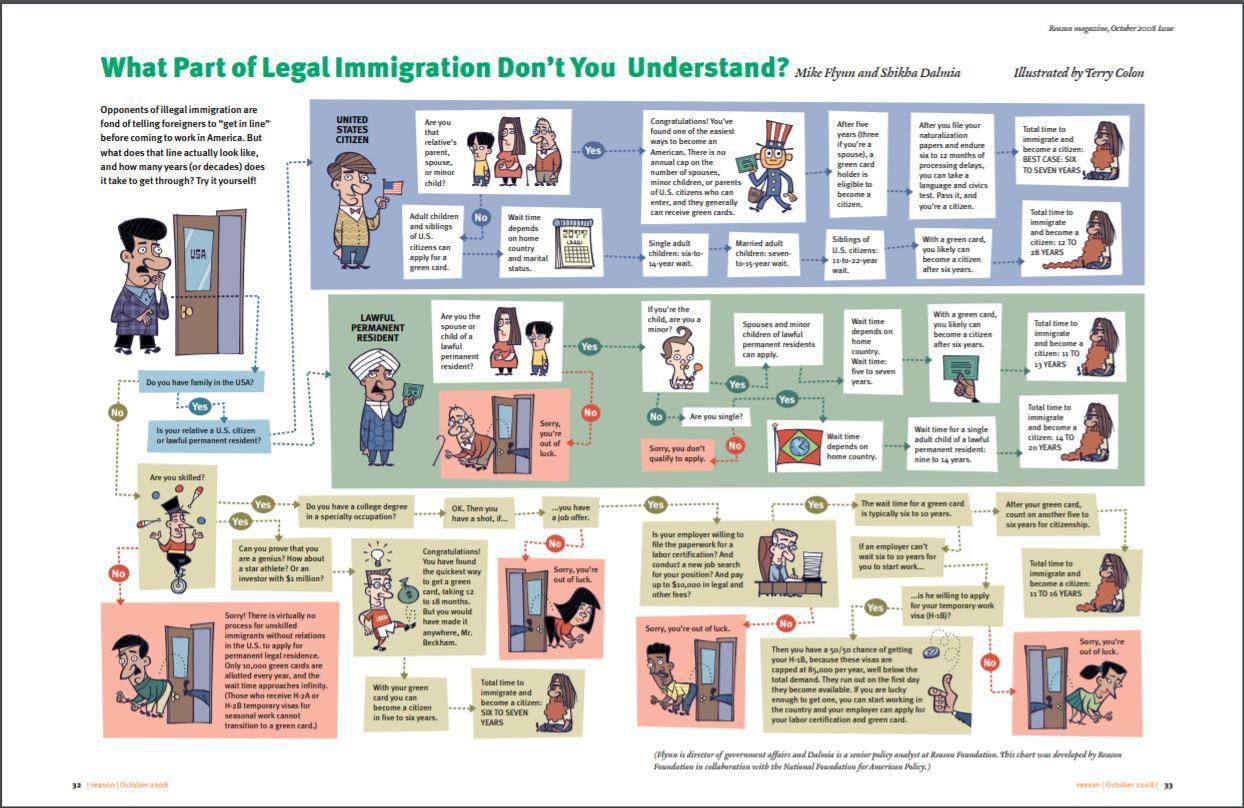11.6 Real Laws, Real Families
By Carla Medel
11.6.1 Preface
Now going into my last year in undergrad and looking into graduate school for programs in counseling, specifically designed for children and families, I would like to thank Liz for allowing me to be a part of this project. It has been one of the best experiences so far in my academic career. I think that at first it doesn’t really make sense as to why I would be so passionate about something like this project, but I’ll explain. All I have ever wanted is to see myself reflected in the things that I partake in, part of that being academic materials. As a Latinx woman and daughter of immigrants, I have never really gotten that, and it can truly take a toll on the way you view yourself and your people.
Because of the privilege I have of being able to make it into higher ed and be a part of this project, I wanted to use that to write about people like me, my parents, and my family so that more children don’t see themselves as an “other,” a little section of the text that no one really goes over. Things haven’t been and aren’t fair for those who identify as immigrants, but people like me have been a part of the United States before this land was even named, and we are here to stay. It’s time for our stories to be told, too. Here, I’d like to explain several of the laws that affect not just families like mine, but, tangentially, all families in the United States.
11.6.2 Deferred Action for Childhood Arrivals
Deferred Action for Childhood Arrivals (DACA) is a policy created under the Obama administration on June 15, 2012. Individuals who meet the following criteria are eligible for DACA:
- are under 31 years of age as of June 15, 2012
- came to the U.S. while under the age of 16
- have continuously resided in the U.S. from June 15, 2007, to the present
- entered the U.S. without inspection or fell out of lawful visa status before June 15, 2012
- were physically present in the United States on June 15, 2012, and at the time of making the request for consideration of DACA with USCIS
- are currently in school, have graduated from high school, have obtained a GED, or have been honorably discharged from the Coast Guard or armed forces
- have not been convicted of a felony offense, a significant misdemeanor, or more than three misdemeanors of any kind
- do not pose a threat to national security or public safety
Applicants have to provide evidence of the above criteria. In addition, every applicant must complete and pass a biographic and biometric background check. An applicant who is granted DACA is not considered to have legal status but will not be deemed to be accruing unlawful presence in the U.S. during the time period when their DACA is in effect. DACA allows for individuals to live in the U.S. without fear of deportation and with work authorization. DACA is temporary as it only lasts 2 years; every 2 years the individual will need to reapply which means submitting an application, getting biometrics done, and paying a fee of $495.
At its peak, there were up to about 800,000 people who were DACA recipients but those numbers dramatically declined during the Trump Administration, due to fear of what would happen to the DACA program. The number of people on DACA now is closer to 600,000 total.
DACA has been on the line since Donald Trump took presidency, having DACA recipients live in limbo unsure of what their future would look like. Even after waiting years for the Supreme Court to make a decision on DACA during this presidency, that decision is not being respected. The Supreme Court decided in July of 2020 that Donald Trump’s decision to rescind DACA was made without the proper steps. Because of this decision, DACA should have been restored to its original form, open to new applicants and advance parole, with a special permit for international travel available to current recipients—but the Department of Homeland Security (DHS) has declared that they will reject all initial DACA requests who have not previously been granted DACA. It also eliminates the possibility for DACA recipients to be granted advance parole. Requests for renewal were changed from a two-year period to a one-year period (National Immigration Law Center, 2020). Not even the highest courts have been able to protect these young dreamers.
Here is one of many stories from the website of the National Immigration Law Center (National Immigration Law Center, n.d.). This website offers many resources for immigrants. In addition, it contains valuable resources for educators and others who are working with immigrant families.
11.6.2.1 In Focus: DACA, A Personal Account
The following story by Esmeralda (pseudonym), a DACA recipient from Santa Clara, California, was posted on the National Immigration Law Center’s website:
I am a current DACA recipient. Given that I am a member of a multi–[immigration] status family, DACA has allowed me to do more for my family, financially and emotionally.
In regards to education, DACA gave me access to the resources I could never afford prior. Having to experience these hardships, I dedicated my life to support the diverse population of students in California, from pre-K to higher education.
DACA allowed me to complete my A.A. and transfer to a four-year institution. I was finally able to complete my bachelor’s degree. After ten long years, this past May, I graduated with a master’s and would love to continue on to a Ph.D.
DACA gave me access to a humane job with a living wage. DACA allowed me to have a driver’s license. Having an actual identity in this country gave me life. I could live without my everyday fear of being deported or having to drive without a license.
DACA gave me access to open a bank account with a credit line, and I would love to one day do something with that credit, like invest in the country I consider my home: the U.S.
DACA changed my life for the best: being able to legally drive, travel to other states in the country, finish my degrees, have a fulfilling job, and give back to my community.
Most importantly, DACA gave me life (National Immigration Law Center (n.d.)
11.6.3 DREAM Act
The DREAM Act was a bill brought forward in 2017 and, unfortunately, died that same year. This is what most DREAMers (young undocumented immigrants) are fighting for (National Immigration Forum, 2017). This bill would provide DREAMers protection from deportation and an opportunity to obtain legal status if they meet certain requirements.
The DREAM Act would create a conditional permanent resident status valid for up to eight years for young undocumented immigrants that would protect them from deportation, allow them to work legally in the United States, and permit them to travel outside the country. To qualify for conditional permanent resident status, young undocumented immigrants would need to meet the following requirements:
- through documentation described in the bill, establish that they were brought to the United States at age 17 or younger and have lived continuously in the United States for at least four years prior to the bill’s enactment;
- pass a government background check, demonstrate “good moral character” with no felony or multiple misdemeanor convictions, submit biometric and biographic data and undergo a biometric and medical exam;
- demonstrate they have been admitted to a college or university, have earned a high school diploma, or are in the process of earning a high school diploma or an equivalent; and
- pay a fee. (U.S. Citizenship and Immigration Services, 2020)
The bill would automatically grant conditional permanent resident status to DACA recipients who still meet the requirements needed to obtain DACA. Conditional permanent resident status can be changed to lawful permanent resident status by:
- maintaining continuous residence in the United States;
- meeting one of the following three requirements:
- completion of at least two years of military service,
- graduation from a college or university or completion of at least two years of a bachelor’s or higher degree program in the United States, or
- employment for a period totaling at least three years;
- demonstrating an ability to read, write, and speak English and an understanding of American history, principles, and form of government;
- passing a government background check, continuing to demonstrate “good moral character” without felony or multiple misdemeanor convictions, submitting biometric and biographic data and undergoing a biometric and medical exam; and
- paying a fee.
11.6.4 The Legal Process

Figure 11.10. The line that immigrants can get into legally is actually very complicated and long. Larger version.
“Just come here legally,” is one of my most disliked phrases for immigrants because the process to do so is not as easy as the general public thinks. Immigrants, just like everyone else, seek out to move because where they currently are isn’t providing them what is needed to succeed. Unlike here in the United States, they cannot just move from one state to another to seek out those opportunities, as they do not exist there either. Instead, they need to leave the country. Some people have the time and money needed to try and apply for a visa or have a family member who is a United States citizen or legal permanent resident (LPR) sponsor them to become an LPR and are able to come to the United States that way. This could take anywhere from six to 28 years and will cost anywhere from $750 to $1,225 per person (U.S. Citizenship and Immigration Services, 2020), so it’s obvious that there could be a lack of money needed to take this route and it is even worse for others if their current situation might be more urgent, and they don’t have the time to wait. If legal immigration was easy, accessible, and fast, it’s very unlikely that people wouldn’t risk their lives entering and living in the United States without documentation.

Figure 11.11. Many people have died while waiting for hearings while in ICE custody.
11.6.5 Licenses and Attributions for Real Laws, Real Families
11.6.5.1 Open Content, Original
“Real Laws, Real Families” by Carla Medel is licensed under CC BY 4.0.
11.6.5.2 All Rights Reserved Content
“Esmeralda” (c) National Immigration Law Center. Used under fair use.
Figure 11.10. “The Legal Process” (c) Terry Colon, Mike Flynn, Shikha Dalmia, Reason Magazine. Used under fair use.
Figure 11.11. “Rest in Power” boxes (c) @unitedwedream. Arranged by Carla Medel. Used under fair use.
11.6.6 References
National Immigration Law Center. Immigrant Legal Resource Center. (2020, August). DACA frequently asked questions. DHS July 2020 memorandum. https://www.ilrc.org/sites/default/files/resources/nilc_ilrc_daca_faq_august_2020.pdf
National Immigration Law Center. (n.d.) Stories in defense of deferred action for childhood arrivals. https://www.nilc.org/issues/daca/daca-fifth-anniversary-stories/
National Immigration Forum. (2017, July 21). DREAM Act of 2017 bill summary. https://immigrationforum.org/article/dream-act-2017-bill-summary/
U.S. Citizenship and Immigration Services. (2020, August 12). Green card eligibility categories. Retrieved September 20, 2020 from https://www.uscis.gov/green-card/green-card-eligibility-categories
U.S. Citizenship and Immigration Services. (2020, May 15). I-485, Application to register permanent residence or adjust status. Retrieved September 20, 2020 from https://www.uscis.gov/i-485
